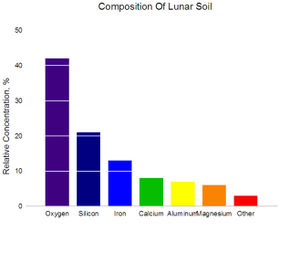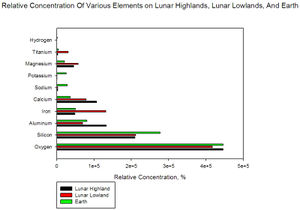Difference between revisions of "Lunar Regolith"
| Line 18: | Line 18: | ||
==Related Articles== | ==Related Articles== | ||
*[[Geologic Processes on the Moon]] | *[[Geologic Processes on the Moon]] | ||
| + | *[[Lunar Dust]] | ||
==External Links== | ==External Links== | ||
Revision as of 01:02, 20 December 2008
This article is a Selenological stub. You can help Lunarpedia by expanding it.
|
The layer of debris which blankets most of the moon is commonly refered to as regolith. Billions of years of bombardment from space has created a highly comminuted (this means it has been broken into ever smaller grains and particles) surface through a process sometimes referered to as "impact gardening" or "space weathering." It is estimated that the regolith varies in thickness from 3 to 5 meters over the younger "maria" to approximatly 10 to 20 meters thick in the older "highlands." Below the impact regolith is a layer of "mega-regolith" consisting of highly fractered bedrock that is tens of kilometers thick.
The portion of the regolith of a size less than 1cm is generally referred to as Lunar Soil, which is a misnomer in terrestrial geologic terms. The term "lunar soil" should not be confused with terrestrial use of the word soil, and no implication of organic content is intended. When pertaining to lunar science, the terms are used interchangeably. The dusty, abrasive portion is referred to as Lunar Dust or "Fines."
Lunar regolith is the focus of many proposed methods of oxygen production and in-situ resource utilization including:
- Ilmenite Reduction
- Fluorine reaction
- Glass Reduction
- Radiation shielding
- Sintered Brick Construction
- Sintered Regolith
- Volatile scavenging
Related Articles
External Links
- Lunar Soil at Wikipedia.org http://en.wikipedia.org/wiki/Lunar_soil
- PERMANENT.com http://permanent.com/
- ISRU on the Moon. by Larry Taylor http://www.lpi.usra.edu/lunar_knowledge/LTaylor.pdf (PDF)








